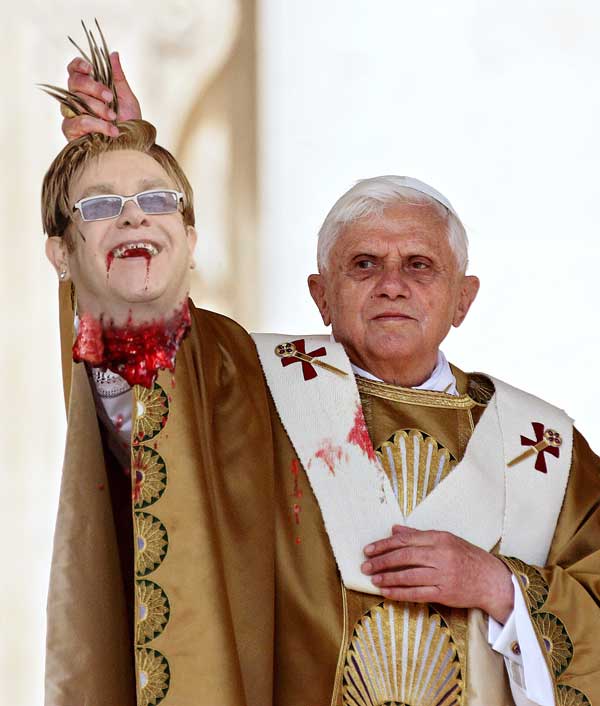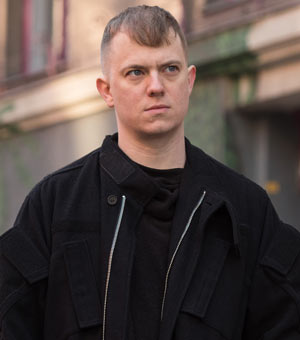Guma Guar
by Travis Jeppesen on April 3, 2008
Guma Guar
Guma Guar is a Prague-based art collective. Through their live actions, interferences, exhibitions, breakcore activism, and resplendent energy, they continue to expand and revise the possibilities of art in the 21st century.
This conversation recently took place via e-mail, as Guma Guar was making preparations for their upcoming exhibition at Prague’s Old Town Hall (April 23rd – June 1st, 2008.)
What does the group Guma Guar stand for? What is it that you do?
The origin of our 3-member art and music group Guma Guar began in 2003 and was initiated by the inner need to publicly express our opinion on certain controversial and problematic public issues, rather than navigating ourselves through the art world based solely on an egoistic presentation of our own inner worlds and building careers, as it is done by most artists these days. There are many artistic groups on the Czech art scene whose art is often described as political or tendentious – according to our view, they are not critical enough and their criticism is too often focused on “official goals” convenient for the current power elite. The initial central theme of Guma Guar’s work is the disputation of the function of the capitalistic world system, criticism of western militarism, questioning gender, issues of minorities, a critical analysis of the cultural industry, and a commentary the function of mass media in today’s society.
Who are the people behind Guma Guar? Or, if your members choose not to identify themselves, can you explain the reasons behind your anonymity?
The group consists of three white heterosexual individuals of male gender living in Prague. Even though the names of these individual members are not explicitly secret, we do not like to mention them in connection with Guma Guar projects. After all, the group was created partly as the expression of a certain skepticism towards the model of the individual artist. At the same time, it seems that our collective identity offers kind of a better legitimacy as commentators of political happenings than we could accomplish individually. Our group activities do not exclude solo activities of individual members.
How does the collective function? Are ideas thought up and executed by individuals in the group, or is everything conceived and executed by the entire collective?
Essentially, we function through both of these principles. Once in a while we have a meeting, which we call brainstorming, as a funny reference to work in advertising agencies. During these meetings, we discuss topics that we consider important. Eventually, we develop concepts that are already partly concrete. It also happens sometimes that one of our members comes with a finished or almost-finished work and there is no need to finalize it if other members agree.
Many – if not most – of your works seem to be rooted in an aesthetics of disruption. Is Guma Guar affiliated with any particular ideology? People often speak of you as anarchists. If this is so, do you adhere to any particular branch of anarchism?
Although we don’t conform fully to any concrete “meta-narration,” we would most likely localize ourselves somewhere on the intersection of moderate anarchism and neo-Marxist tendencies.
In every case, cornerstones remain mainly the (revised) teachings of the so-called Frankfurt schools (Marcuse, Adorno, Benjamin, Fromm), the soft-anarchist theory of The Temporary Autonomous Zone by Hakim Bey, texts by Noam Chomsky, essays by the sociologist Immanuel Wallerstein, and the Czech philosophers Václav B?lohradský and Antonín Kosík.
Lately, we have found interesting some opinions of the duo Antonio Negri & Michael Hardt, or the new book Shock Doctrine by Naomi Klein. We could follow name dozens of other texts that are reflected in the work of Guma Guar’s work.
To put it simply, our fundamental “program” is “a critical view of society.” In our opinion, without it, the current society will fall into a morass of consumer totality.
Do politics really have a place in art? Aren’t you “preaching to the converted,” in a sense, as most of the people who see your work already hold similar political views as yourselves?
We are not really sure that the majority of our hypothetical audience shares the opinions we present. We think that the spectrum of our viewers is fairly unmonolithic in terms of the places we use, such as galleries, the street, clubs, free parties… Even the opinions of gallery visitors do not fully correspond with ours. Often controversial exhibitions are discussed in the media, thanks to which the discussed topics reach a wider public.
We believe that there is a space in art (as it is a mirror of society) for everything that creates this society – and politics is important mainly in a democratic society. All art has a political dimension.
This interview is reprinted from Think Again magazine.



Leave your comment